In this article, we will learn how to Convert 2 wire RTD into 3 or 4-wire RTD. This procedure is required to reduce the temperature measurement error of 2 wire RTD.
RTD (Resistance temperature detector) is widely used in the process plants. RTD stands for Resistance Temperature Detector. It is the primary sensing element for temperature detection. RTD gives output in terms of Ohm to the temperature transmitter. Sometimes RTD has directly connected to system cards also. The temperature measurement is very important and without temperature measurement, we cannot run a plant.
Many times we face issues in RTD and need to replace the faulty RTD immediately. For replacing RTD we need the same kind of RTD. The issue we are going to discuss is faced by almost all instrumentation engineers at one point of time in their career or even multiple times. Before proceeding further let us understand what are the different types of RTDs.
Different types of RTD
There are three types of RTDs on the basis of their wiring configuration.
2 wire RTD
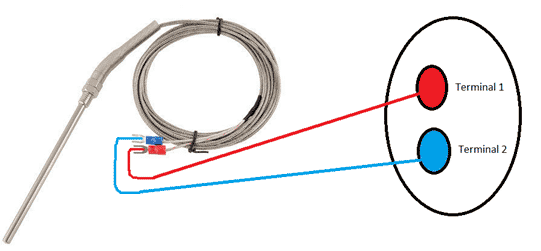
3 wire RTD
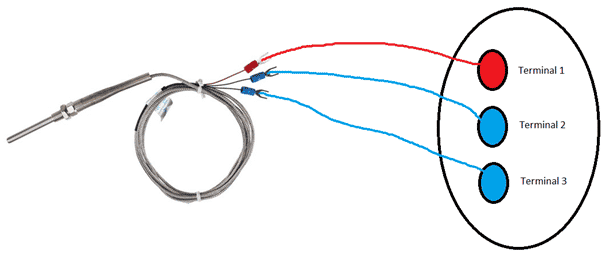
4 wire RTD
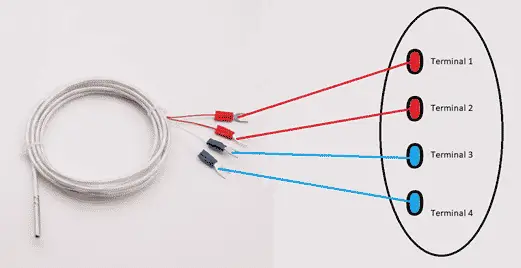
Based on the type of material and their resistance, there are many types of RTD like PT100, PT1000, and many more.
Now coming to the main point about the issue related to the spare RTD. Many times we have 3 wire RTD installed in the field. When this 3-wire RTD fails, we need a new 3-wire RTD, and in stock, we don’t have a 3-wire RTD. We have a 2 wire RTD. Or we have a 4 wire RTD installed in the field and suppose it fails and we don’t have any similar spare. But instead, we have a 2-wire RTD as a spare.
Hope you know the difference between 2-wire RTD, 3-wire RTD, and 4-wire RTD. If in doubt then Click Here to clear the concepts of 2 wire, 3 wire, and 4 wire RTD.
In this article, we will discuss how to use a 2-wire RTD in place of a 3-wire RTD or a 4-wire RTD.
Although using 2-wire RTD in place of 3-wire RTD or 4-wire RTD is not recommended. Installing a 2-wire RTD in place of a 3-wire RTD or 4-wire RTD is just a temporary solution for keeping the plant in running condition. There will be measurement errors but less compared to the original 2-wire configuration.
2 wire RTD in place of 3 wire RTD
We know the basics of 3-wire RTD. In a 3-wire RTD, there are 3 lead wires. The resistance between one pair is always less than or near 1 ohm. So for using a 2-wire RTD as a 3-wire RTD, make connections as follows.
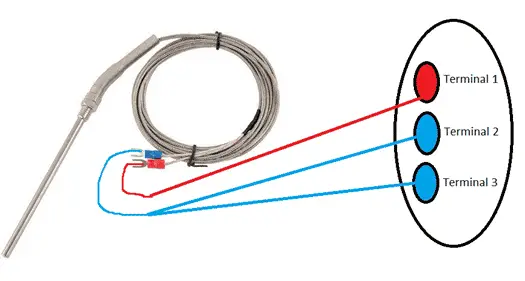
Connect an extra cable to any one lead from RTD and to the transmitter terminal.
NOTE: Here lead wire compensation is eliminated up to some extent. The accuracy of this method is surely less than that of the original 3-wire configuration. So move forward with this method of using 2 wire RTD in place of 3 wire RTD after thinking and analyzing the process criticality.
2 wire RTD in place of 4 wire RTD
We already had a look at the basics of 4-wire RTD. In a 3-wire RTD, there is a total of 4 lead wires. So we have 2 pairs in which the resistance between each individual pair of cables is always less than or near to 1 ohm. So for using a 2-wire RTD as a 4-wire RTD, make connections as follows.
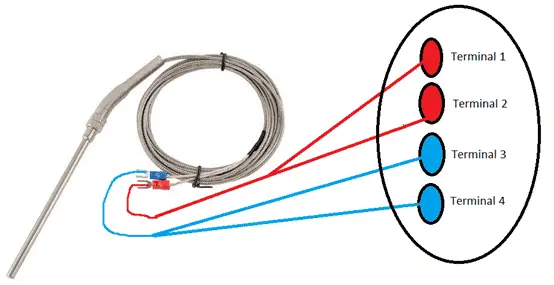
Connect a cable parallel to both the existing cables. Make connections at all terminals as shown in the figure. Here also we can do connections in 2 types of configurations.
But always keep in mind that the accuracy of temperature measurement decreases if we convert 2-wire RTD into 3 or 4-wire RTD.